Creative Agency: How To Start One in 7 Steps [2025]
Starting a creative agency is exciting but also daunting. There's a lot to take care of, so we've compiled 7 practical steps with detailed examples.




There’s a common misconception around creative agencies…
That it’s “easy” to start one, and that you don’t need much preparation.
But starting an agency isn’t the same as finding creative success and maintaining it.
In 2025, I want you to find that success and maintain it for many years ahead.
So, here’s how to start a lasting creative agency.
I know it’s tempting to just jump into it, I really do.
It’s exactly what I did in early 2020, and it came back to haunt me 2 years later.
Spending 1 - 2 weeks on the boring stuff will save you a LOT of headaches months, years, even decades down the line. Creative agencies are businesses, and businesses are (unfortunately) prone to failure.
As a former small agency owner, I can tell you that the biggest challenges you’ll face are around money and time. They’re not pretty topics, but they’re the lifeblood of a successful creative agency.

To succeed in this business, there are 3 things you need to obsess over:
It’s so easy to get excited about a particular customer project and end up spending the entire month on that project only, leaving little room for new customers and cutting your profits to the bone.
To start a creative agency, you need to think in agency terms.
Let me take you through a few preliminary guidelines.
(P.s: If you’ve already sorted most of the legal / financial stuff, feel free to skip to the 7 steps!)
Every successful agency is built on talent, hard work, and humility.
But rushing your way to closing contracts without thinking about their repercussions can hamper your ability to provide value for your customers and your creative agency in the long-term.
If you’re unsure about the sustainability of your services as you’re first starting out, offer short 3/6 month contracts that won’t automatically renew.
That’ll give you the opportunity to figure out the costs associated with the service and renegotiate more sustainable contracts later on.

The last thing you want is to be stuck in a multi-year, legally-binding contract that bleeds money.
And I perfectly understand if you’re not a finance person, I’m not one either!
But I learned a few tricks to help get your creative agency to profitability…
With the Fiverrs and Upworks out there competing for your customers, it’s super tempting to just open the floodgates and let customers auto sign up for your services publicly on your website.
That’s the whole idea behind “productized” services:
» Packaging your creative agency’s work into flat-priced services that are billed on a monthly, quarterly, or even yearly basis—introducing limitations to ensure you remain profitable.
This was the structure I had taken with my agency back in 2020.
And it totally worked!
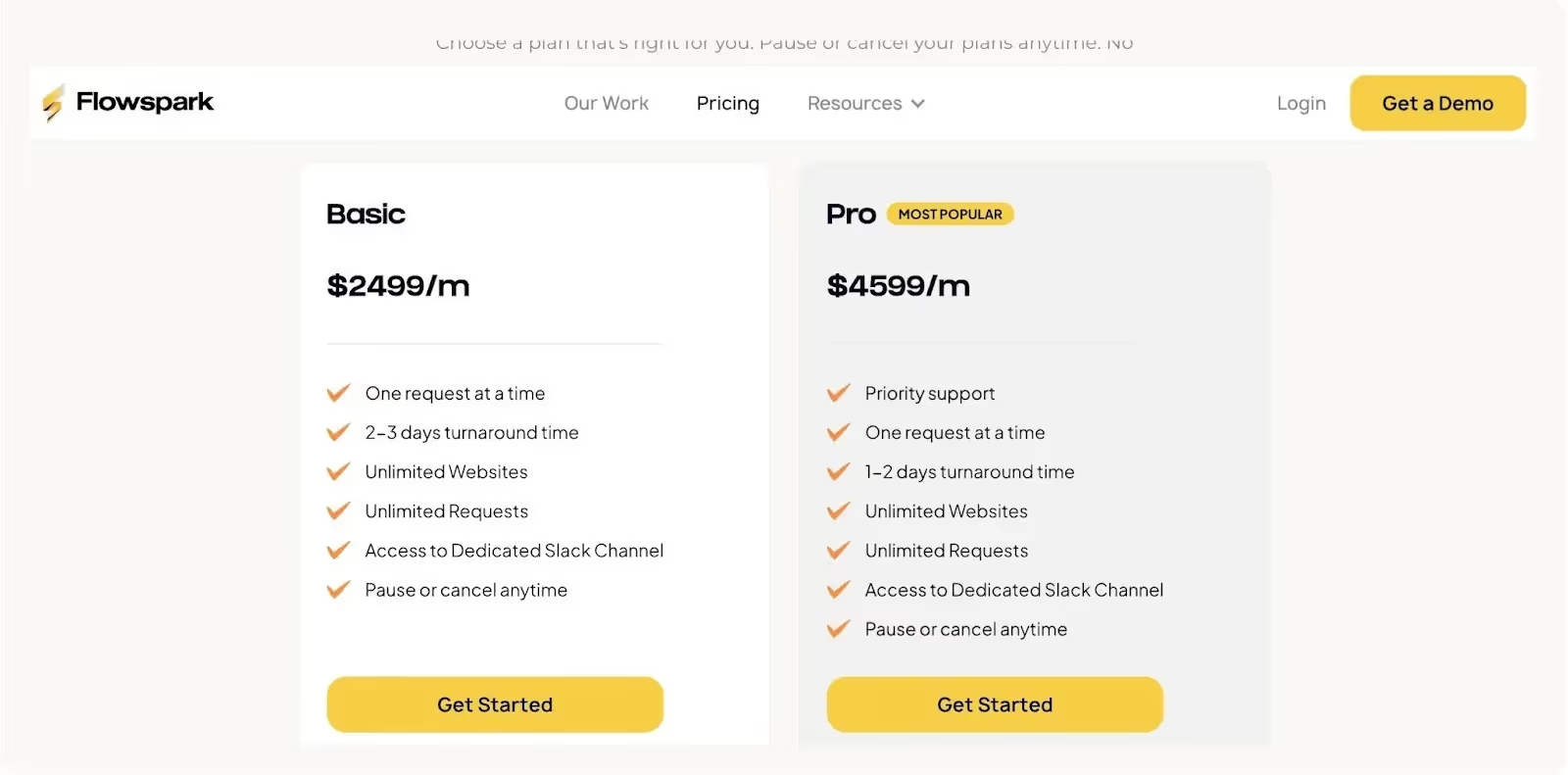
People were buying services and were happy with them.
It’s a model that still works wonders in 2025, especially as a small creative firm.
BUT—even if I recommend this approach—you should test the waters first.
I learned firsthand what it means to hastily launch a service so popular that it works against you. Remember 1 of the 3 success points I mentioned?
“Always deliver on time and with consistent quality”
You can’t do that when you’re inundated with demand you can’t realistically meet.
The best way to avoid this scenario is reaching out to potential customers in small, targeted pools, and observing their reactions.
Carrying out the first commitments without overburdening your agency.

Then, as your processes become more effective and efficient, you open the service up to more potential customers, with the success stories of the smaller pool to support your growth.
By all means, display the price publicly if you find it a good strategy.
But don’t just take on any customer—filter requests down to those you know will benefit from your creative services the most.
(You’ll be surprised by how much demand there is for professional services!)
If you’re selling something you don’t have a lot of experience in, you’re not an impostor. You just want to deliver value in a particular line of work.
(And should be ready to demonstrate commitment.)
Unfortunately, many agencies take this definition on the nose, offering every service under the sun and clearly showing that they don’t have an understanding of the value they deliver.
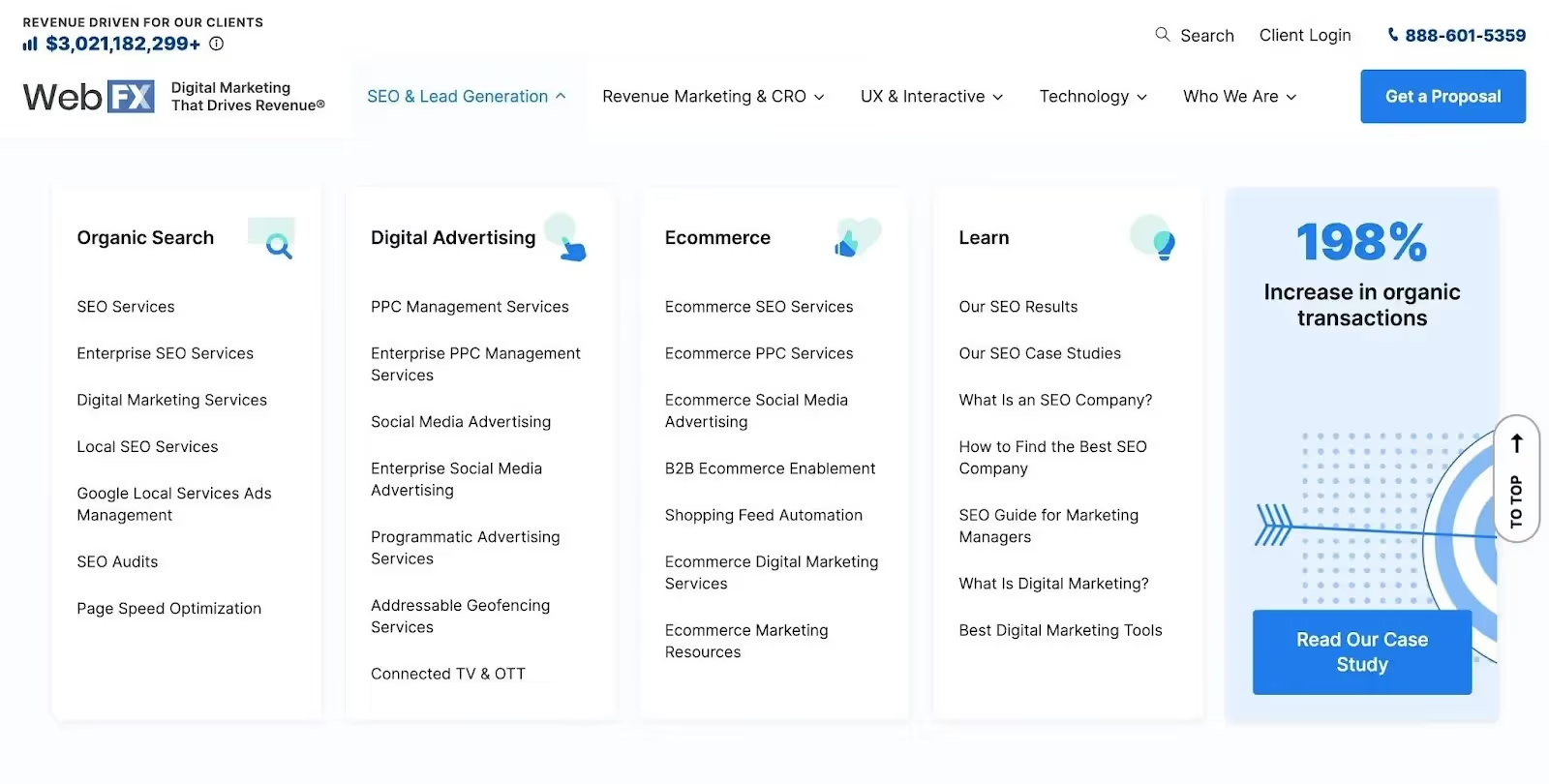
The reality is, customers are looking for specific creative solutions to their problems.
You need to take a stance on a particular issue and see if it resonates.
If it doesn’t, you can always “pivot” (i.e. change your offering to something new).
But unless your agency has 1000s of employees, listing a lot of services works against you. Here’s what I recommend you do instead:
It will also significantly reduce your burden of having to manage impossible, “do-it-all” expectations typical of customers that hire graphic designers without having their mind set on why.

For example, you might offer a simple infographic service and test it against an infographic + enclosing blog post + SEO research service.
The former requires that the customer knows what they want beforehand, and you simply produce the deliverable. The latter has you as a consultant for the customer, taking the helm of their content strategy and delivering value from A to Z.
By putting them side by side, you can identify which delivers better customers at better rates, and where you ultimately retain more profits.
Drop the underperforming one and invest in the other.
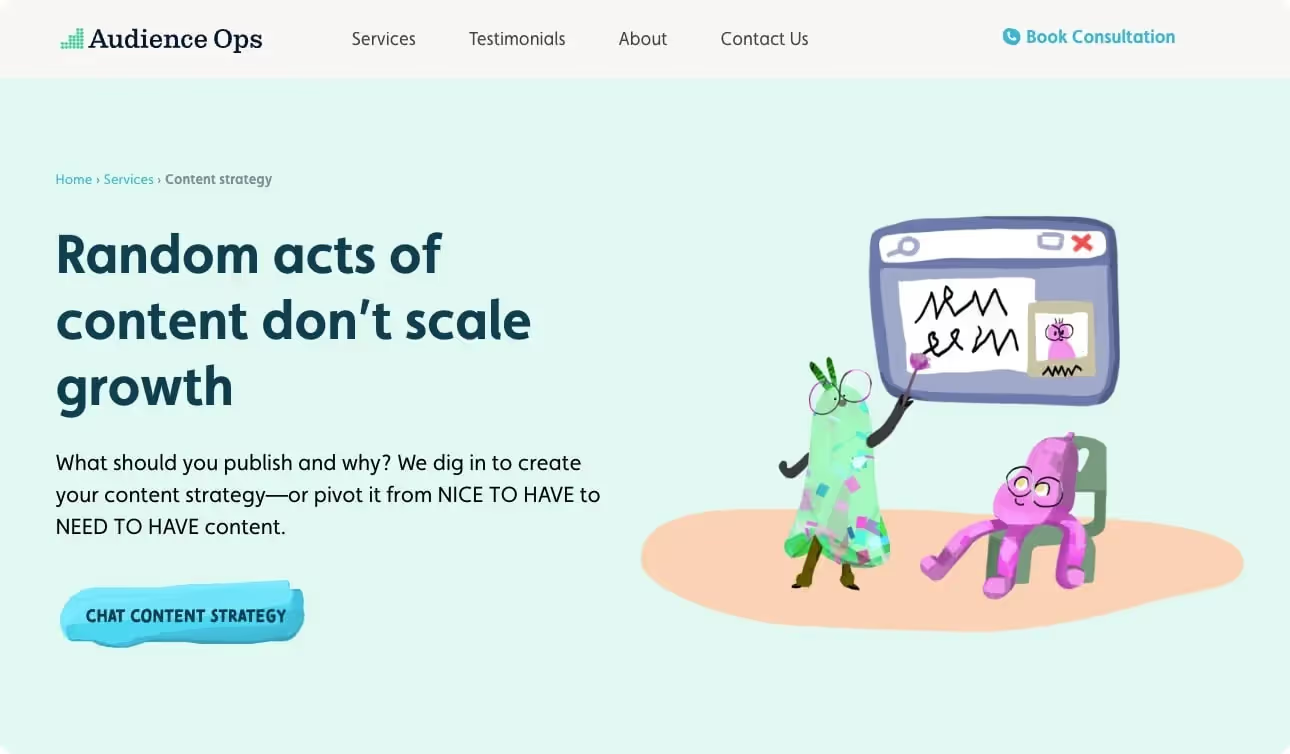
Creative agencies grow well when they are able to maintain the quality of existing services and expand into other service areas without sacrificing the experience of previous customers.
In my experience as an ex-agency owner, we did best when we doubled down on the value of existing services, and worst when we expanded to other offerings too quickly.
This one is straightforward, but deserves an honorable mention.
» You, and only you, are the one setting the value of your services.
It might sound “obvious,” but I’ve seen so many instances of customers exploiting a service provider, basically trying to take control of the value narrative and making them an extension of their employees.
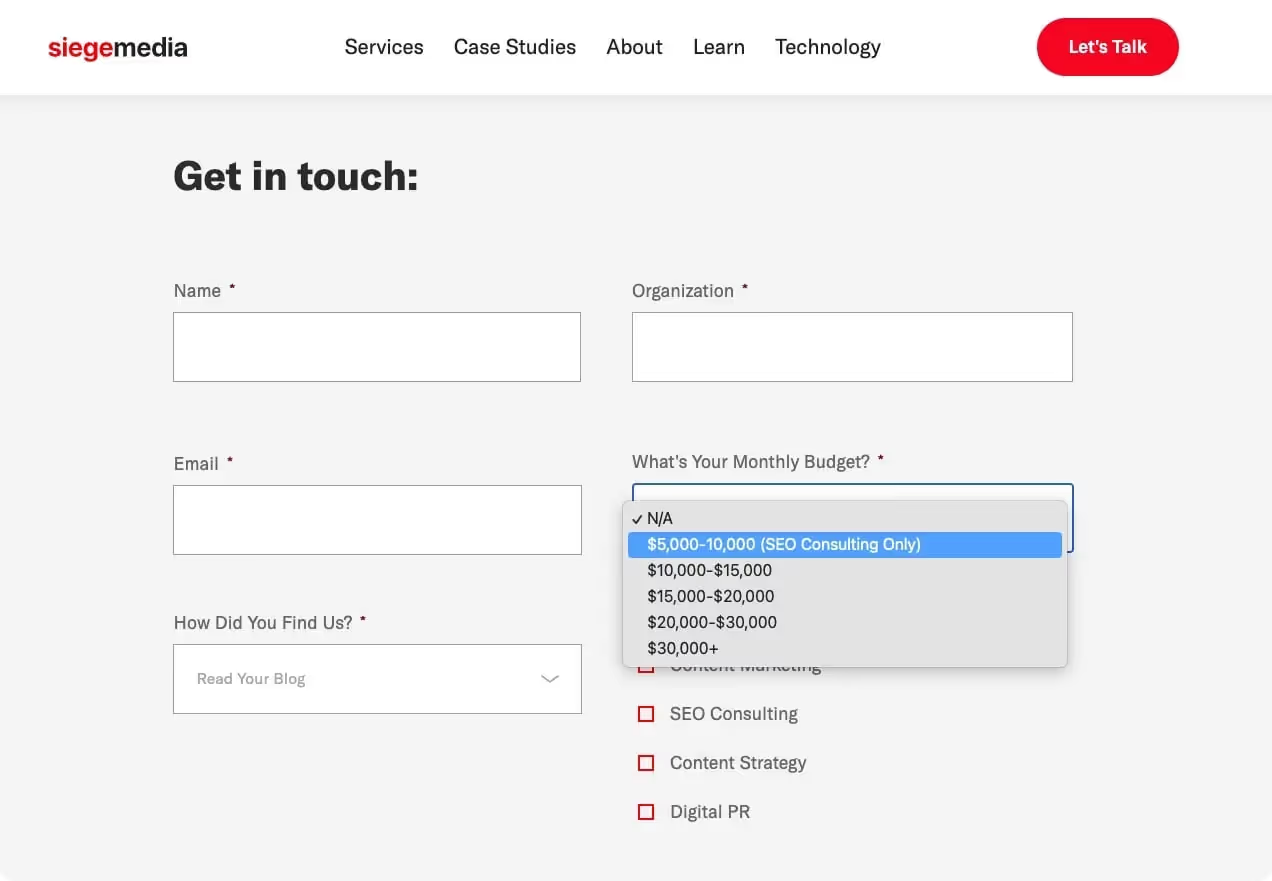
That’s something you need to guard yourself against early in the startup process.
Imagine if you went to a grocery store, saw the price for 2 cartons of milk, took them over to the counter and started arguing that they should cost $0.40 less each because the ticket price is too high.
You’d be given the boot in no time.
The same thing applies with professional services.
If you have customers constantly trying to drive the price of your services down, you need to (gracefully) show them the door. Know your worth and protect it from those who want to bring you down.
Keeping track of time is one of those things that intuitively make sense when working on customer projects but is hardly ever done or even set up when first starting a creative agency.
Let me tell you how I see it.
* quick pause *
It’s mandatory!
Why?
Because it tells you how profitable you are.
Apart from enabling you and your team members to work on projects you love and are proud of, the primary concern for your creative agency should be healthy, long-lasting profits.
Since all agencies are human-powered, their economics revolve entirely around time.
You can’t start, run, and much less grow an agency without proper time tracking.

And you don’t have to go crazy trying to implement it either.
Agency management platforms like ManyRequests make it super easy to link time spent on specific tasks directly to the customer and the project being carried out.
That’s it, that’s all you need to do as a start.
As you move into your first few months of operations, you then look back at those time reports, compare them against the project’s overall budget, the man hours and admin costs associated, and…
You’ve got yourself your gross profit!
(More on that in the financial section below)
If you’re planning to start your own creative agency, time is literally of the essence.
Back to the 3rd thing you need to obsess over for a healthy creative agency:
» Profits!
I’m not the type of guy to say that profits are the only thing that matters. I don’t actually believe that because it often skews the view towards cutting costs which might actually be important.

But they’re 100% the biggest part of starting and maintaining a creative agency.
Forget that—they’re the biggest part of maintaining any business.
If you don’t have your eyes set on a business model that will help you become profitable within a year or so, you’re either a tech company or someone with a lot of money to throw around.
If you’re intimidated by financial records (I know I was when I first started my agency), I promise you they’re not hard to learn, and you don’t need an accountant to understand them. You want to keep track of 3 key documents every other week:
It’s an absolute eye opener for pinpointing whether your agency is sustainable for the long-term (cash flow positive), is relatively flat in its cash intake, or bleeds money.
Ok, we’re basically done with the “boring” stuff.
But trust me, as an agency owner you’ll thank yourself for learning these things first.
You don’t have to take a long course either, just sign up to a bookkeeping service like QuickBooks or Xero, connect your bank account, categorize each transaction based on the expenditure and income options QB provides, attach invoices and receipts, and—once you’re finished—use their standard reports.
All of these tools have standard versions of the 3 documents shown above.
Congrats!
You’re now at the “creative” part of the article.
This is where I’ll show you a few steps—partly inspired from my agency experience—on how to effectively start, grow, and manage your own creative organization.
A few things to note:
Enough talking, let’s get to it:
When you’re starting an agency, your people are by far your most valuable asset.
And, spoiler alert, they will remain such throughout your agency’s lifetime.
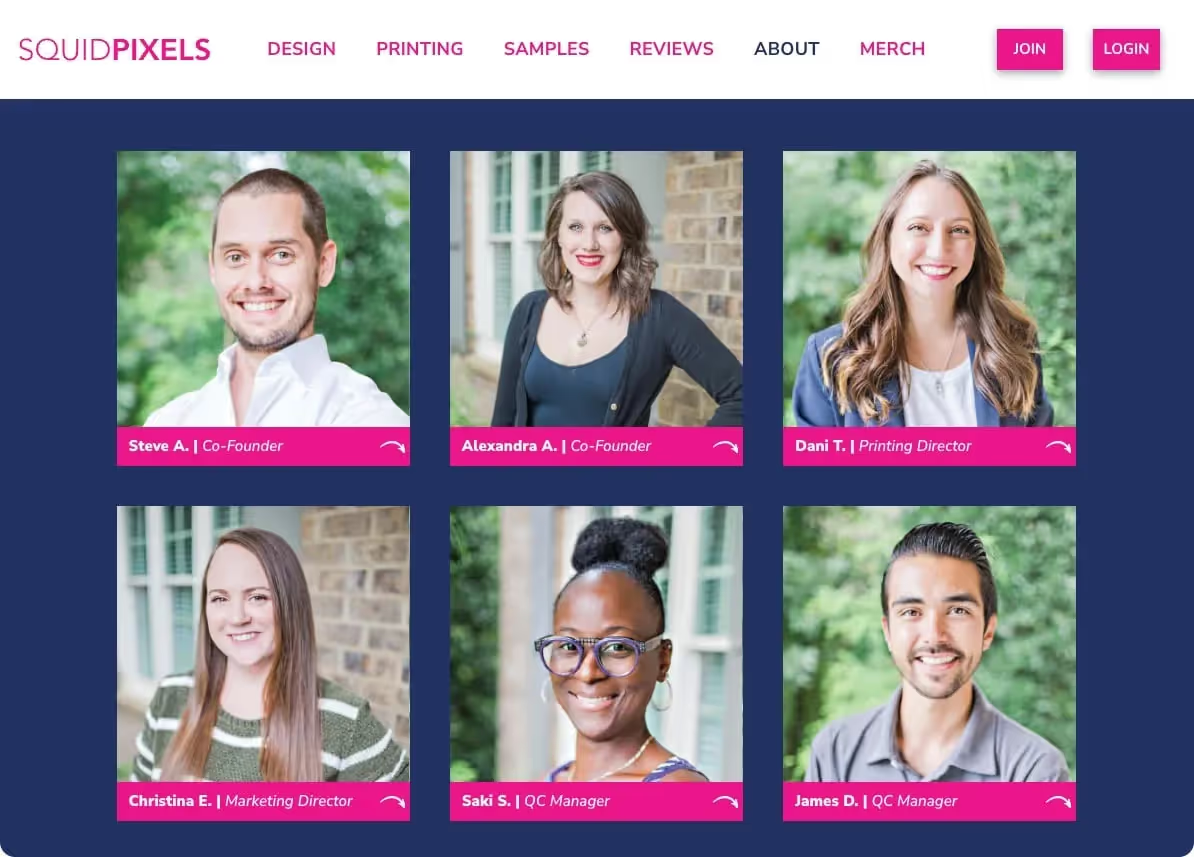
So it’s only natural to start from the talent, even before the logo (ouch).
But what if you’re a solo founder?
Or you have a potential co-founder who’s on the fence…
Or perhaps you have a huge team ready to go!
These are all just fine, you can absolutely start an agency on your own and scale it gradually, or get your entire network in and push for big contracts out of the gate.
All good possibilities.
So what’s the first step?
When you boil it down to its core value, a creative agency is made of raw talent: people who have honed their craft and know the difference between mediocre work and top tier quality.

If you’re not at that stage yet, don’t sweat it.
Starting an agency at different stages of your career is a-ok.
But you need to consider a few things:

Remember, invest in people earlier than anything else.
I can’t stress enough how important it is to your creative agency’s success.
Once you have a good idea of the people structure in your agency, you want to assign responsibilities.
BUT, you don’t want to be rigid with it, you want to be broad initially.
That’s because the startup process for a creative agency is full of twists and turns, and it wouldn’t make sense to say: “Graphic designer! Focus only on creating blog graphics every day.”

You want early contributors to proactively seek areas where they can add value.
For example:
During the startup phase, it’s all about defaulting to action, where producing and delivering anything is better than overthinking every detail or endlessly planning your strategies.
Why?
Because it helps you point your finger at something tangible and say:
“Mh, what if …?”
It’s a process of trial and error, where the first output leads to the second output that leads to the third output—you get the idea. As a creative, you should lean into this “chaos” of activities early on and slowly guide them towards a refined, consistent, long-lasting version of your agency’s value proposition.

I won’t spend much time talking about this as:
My recommendation is to find a legal structure that allows the most flexibility in dividing shares between contributors. But if you want to retain 100% ownership, the equivalent of an LLC in the US will do just fine.
Let’s address the elephant in the room:
» You don’t need to and shouldn’t write a business plan!
They are the most rigid way of thinking about a business, and they simply don’t work.
Instead, you want to obsess over one concept: positioning.

Brand positioning is the most tangible process for identifying, drafting, and delivering your agency’s “unique value”: a representation of what you do that’s uniquely valuable in the market.
It doesn’t have to be anything crazy.
It could just be a creative twist in the way you deliver your services.
What’s important is that the brand positioning exercise will force you to extract who your services are best suited for, why they solve their problems, how they’re delivered, and which competitors you’re up against.
This is the only written exercise that’s worth going through during your agency’s startup process.
Why focus on positioning instead of a business plan?
Because it’s fundamentally way more flexible.
You can write parts of it, test them in the market, see if they resonate, and either double down on that idea or pivot to another one. It’s a living document that puts your creative services in action.

So how do you carry out a positioning exercise?
That is an “ideal” customer because they are in the market for a solution like yours, they have the right budget for a team size like yours, and they need recurring services to help them support their website and media / marketing strategy long-term. You want to target customers which have the most potential for recurring revenue at profitable rates.

Once you made a few educated guesses on what your clients are experiencing, “simply” address those concerns directly.
You’ll want to learn about benefit-capability mapping here.
Listen to your prospects and come up with your creative solution to their problems. Don’t look elsewhere, create something from scratch that they’ll value.
If you apply your own creativity, you’ll often produce something entirely unique.
The grass isn’t always greener on the other side!
Keep a 2-3 page positioning document handy and update it over time.
Especially the benefit-capability mapping and messaging pillars!
The biggest mistake many businesses make is to write from an internal perspective:
“We’re industry leaders for vertical X”
“Our cutting-edge design process is the best in Y.”
Avoid this corpo-speak at all costs.

You always want to write from the customer’s perspective!
In fact, I’d argue you want to think from the customer’s POV every single day, not just for your marketing but for providing support, selling services, communicating with team members, etc.
The problem is, it’s easy to fall back to the old ways.
We’re not hardwired to think as someone else, we have biases.
To solve for this, creative project management tools like ManyRequests link all of your agency operations directly to the customer themselves.
So you’re essentially forced to think like them.
You can even peek into how they experience your services.

While you don’t want to be rigid with your project management, it’s never too soon to implement a few foundational processes.
Task management, agreement templates, client intake forms…
You don’t need to have everything pre-structured to start.
Just get a service out there and see if the people you send it to react positively.
Be candid, mention that you’re running a small pilot test for an upcoming agency you want to build and see what the response is.
People love it when they can be part of someone’s growth path.
The best way to start an agency?
Getting a customer before you even have a brand.
That tells you that there is a need for your creative services, and that the customer trusts you to solve their problem. Logos and pretty colors are just a way to expand that trust, but you can start small.

Picking up from your brand positioning, you’re ready to go all in with your offering.
In my experience, it’s always best to prepare a piece of collateral beforehand (e.g. a landing page, social post, etc.) showing the value of the service starting from the customer’s pain point.
Why?
For the same reason that delivering anything—even if flawed—is better than trying to perfect everything and never launching.
Your prospects can point their finger and say:
“Ok, but what about…”
That feedback will help you address objections and ultimately sell your services
If you go out there with just an idea and a long email, you’ll have a tough time.

With your positioning in shape, it’s way easier to produce something that prospects can point to.
Get some collateral up and send it out—let the content do the talking.
At this point, it’s good to start thinking about your brand.
With the messaging pillars you have written in step #3, you’ve already started the process of branding yourself. Remember, a brand isn’t just the visuals: it’s the copy, the people, the mission.
When you’re first drafting your creative services, consider a few things:
You want to embed all of the answers to these questions into your services’ collateral, not as an afterthought FAQ section at the bottom, but as a fundamental part of their messaging.

Try not to shoehorn these things in later on.
Write drafts of your service trying to answer all objections in the copy itself, make the marketing a fundamental part of the service, almost inseparable.
Then iterate them together.
Picture me as your ideal customer.
I’m a busy guy, I have lots to deal with this week.
I like to take weekends off and don’t have much time for browsing around the internet during the week; I absolutely cannot afford to lose time trying to figure out what your service does. If it takes me more than a minute, I’m out.
That’s a HUGE problem.
Selling today is all about hooking people into taking action.
For that to happen, you need to compel them.
“Infographics you won’t mind spending $1299 on.”
“Visuals + data = Engagement that drives 5x sales.”
You want to give the reader a reason to act as soon as they land on your page.
Think through their pain points, figure out the benefits, and craft a one-line statement for each.
Pricing is a gigantic topic.
But I wanted to mention it as it’s fundamental to your agency’s success.
I couldn’t possibly do it justice in this (already long) post, so I recommend that you read ManyRequest’s guide on how to price your agency services.
It has all you need to know about pricing!
As a creative, you probably already have a billion ideas around your branding.
I’ve built a few brands myself, so I have a few tips.
Like I mentioned in point #3, my biggest suggestion is to embed your branding directly into your service, meaning that the experience of buying and consuming your service is part of the price. We all do business emotionally.
Your brand is meant to “stress” those emotions.
It’s about getting people to buy and stay.
The more you embed your marketing into the service itself (e.g. fun emails that are sent out when something is accomplished during the service), the more customers are likely to stay.

Don’t reduce it down to just buying.
A lot of brands want to make their collateral the prettiest, the most creative and appealing visuals, they want animations and sounds—all the design bells and whistles possible.
But to me, branding is about the experience.
Not the “in your face” graphic elements.
There is a place for those.
But the core value is how your prospect goes from not knowing anything about you, to having their curiosity piqued, to becoming interested in your service, to buying and receiving support.
So it’s worth sitting down and brainstorming all the possible ways that a customer might interact with your agency’s brand: through your website, via social media, by word of mouth, etc.
How are they going to perceive your brand?
Is your messaging consistent throughout channels?
Will they land where they expect next or will they be thrown off?
Often, you’ll see that it’s the experience that makes the sale.
The core value has to be there, but a pleasurable UX gets them over the line quicker.

This one is entirely up to you.
I’m sure you understand the power of good brand names.
A catchy, creative name sticks in someone’s head when they see it, and it’s immediately associative with the things you do best.
Specialized in infographics?
“Infonatics”, “Graphy”, “Info[Animal name]”.
The options are endless.
You don’t have to be literal either.
Use abstract names or foreign words that map to what you do.
It pays off to name your brand based on your company’s mission and services as it increases mental availability from your prospects and enables scalable growth in the long-term.
By “evocative,” I mean branding touches that are unique to your brand.
My company uses sage leaves as an evocative element as they inspire relaxation—plus, they’re not very common in the B2B world where you often see abstract lines and geometric shapes.

They’re also directly linked to the brand name: Sagewill.
At first these small things might not do much, but over time they become so embedded throughout all parts of your marketing that they instantly click in prospects’ minds.
“Ah, I’ve seen these before!”
You want your visuals to have that effect on people.
You have your service and website laid out.
You’re confident in your ability to grow the creative agency of your dreams.
So what’s stopping you from pushing onwards?
…
Nothing!
Or at least, you shouldn’t feel like something is stopping you.
Sales is hard, it’s a bit of a mental barrier at first.
But when you realize that it’s all about working together with the prospect to achieve a mutually beneficial outcome, it almost becomes fun.
The most common mistake I see early agency owners make?
» Treating sales like a battle.
It’s you against the prospect.
This is almost everyone’s natural instinct at first.
You’re literally battling to get them to pay you, and then they don’t.
So you battle again, and again, and again…
See the problem?
The reality is, sales is more of a therapy session and less of a skirmish.
You’re there to listen 80% of the time and ask questions the remaining 20%.
Once you’ve gathered enough information from the prospect, you recap that information for your customer with the added context of how your creative service helps, and provide a quote.
This way, it becomes a natural conversation, not an argument.
You’ve done the hard work of positioning your services for maximum customer benefit, why throw it all away with long-winded sales pitches?
When you’re reaching out to prospects, be concise.
“Hey [prospect name],
I just created a personalized report for [your brand] this morning.
It includes [value proposition], are you available for a 30-minute call next Tuesday to discuss it?
Thanks,
[your name]”
Add a link to the personalized landing page / report in the bolded part and you’re good to go. Let your value proposition do the talking.
As the owner of a creative agency, you are its most important salesperson.
You want prospects to see you—feel what it’s like to talk to you.

Otherwise how do they know if they can trust you?
Or even want to speak with you?
Nobody enjoys dealing with strangers, so you have to make it easy for prospects to see you as a friendly “bud,” without going too informal.
Videos are the absolute best way to achieve that:
You don’t need to dress like an executive, that stuff is in the past.
All you need is a decent webcam and a good light source shining directly on your face. Use tools like Loom, Vidyard or Vimeo.
They all have generous free tiers, particularly Vimeo.
Overcomplicating the sales process is your enemy.
You usually want around 3 - 4 touches to sell small-scale services:
This process will change if you work with large companies.
(Usually takes 7 to 12 touches).
And it’ll also be slightly different if you have a productized agency with pricing that’s open to the public. But the gist remains the same: keep it simple, keep it contextual.
I’ve made this mistake so many times it hurts.
Spending on things you don’t need too early in the startup process.
Let me tell you straight:
What you need is a bit of elbow grease and some patience.
The more you spend early on, the narrower your time window for success becomes. You do not want that stress when you already have the uncertainty of figuring out whether your services will sell.
There are 4 exact things you need to find the first customers for your service:
Literally all 4 can be done for free in 2025.

With these, you can get your creative agency to acquire the first 5 to 10 customers. From there onwards, I recommend you use a client portal like ManyRequests for a more streamlined experience.
Big marketing spends are your enemy when you’re starting out.
They eat into your profits and force you to keep spending over and over again.
I won’t go in depth into this, there are plenty of CAC resources out there. But in short, you need to figure out how much it costs in marketing and sales expenses for you to acquire a customer.
It’s a simple formula:
Total marketing and sales costs / Number of new customers
Do that for a specific period of time, like a quarter for example.
Your CAC helps you understand how sustainable your marketing efforts are through a comparison with your LTV, or Customer Lifetime Value, which is the average value of a customer contract.

A lot of marketers tout ads as the end-all be-all of customer acquisition.
So let’s talk about them.
First things first:
» Ads work.
There’s no doubt about that, we’re all influenced by them.
But for your creative agency to remain sustainable in the long-term, you need to find organic avenues of customer acquisition, meaning channels you don’t have to continuously pay for.
That’s partnerships, reviews and word of mouth, content marketing, social media, interviews, …
Partnerships and reviews in particular are my favorite way of kickstarting a new agency into full business operations mode.
That’s because agencies usually rely on various platforms to do their work.
Think tools like Figma, Webflow, WordPress…
If you appear in directories for “Webflow experts,” chances are people will contact you. But you need to be smart about it, focus on one topic and platform at a time.

Then get your early customers to write reviews and highlight your expertise in that particular topic. Update your website with that new wave of social proof, get more customers, and repeat all over again.
That’s healthy growth!
I’ll close this (hopefully useful) list on an inspirational note.
Agencies have a bit of a bad rep in the creative industry, mostly because of disorganization, 24/7 “putting out fires” mode, not so great pay, etc.
But that doesn’t have to be the norm.
Creative agencies are extremely important to digital economies.
They are the backbone of a lot of what we see and consume online.
And they can be well-organized, well-cultured, and respectful of contributors.
But to get there, you need to want that to be the case.
Being intentional with your decisions to invest in the foundations before you jump straight into work, giving all contributors a voice (use public channels in tools like Slack!), valuing long-term education…

These are all things that will make team members stick.
It’s called “building a culture,” and it’s not just a buzzword.
Agencies (and businesses in general) with strong cultures perform better, are more innovative, they close bigger contracts, are seen as leaders in their fields, and are more confident about their expertise.
Foster this environment and your creative team will rarely underperform.
When you’re starting an agency, there are things you can’t overlook:
But when you have a sound foundation, the world truly becomes your oyster.
The steps I’ve outlined come from my own experience starting a small creative agency. What matters are the steps you will take to achieve success.

There is no cookie cutter process to it.
My hope is that you’ll have gained some foundational knowledge on how to both start and keep your agency profitable over many years in this article.
The rest is for you to draw inspiration from.
And if you need a complete solution to start, grow, and manage your creative agency—platforms like ManyRequests are a real boon to the entire process.
Sayonara my friend!